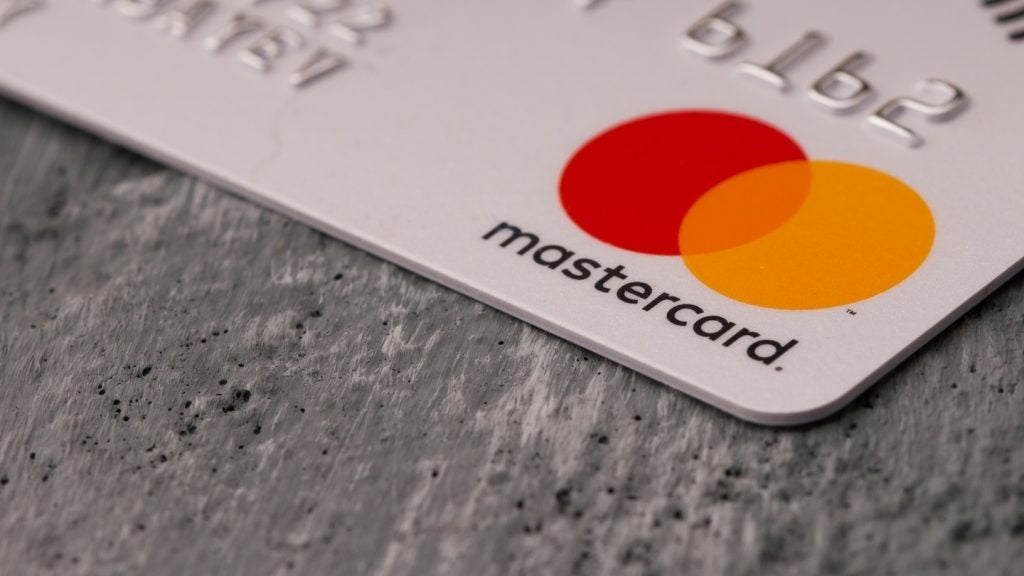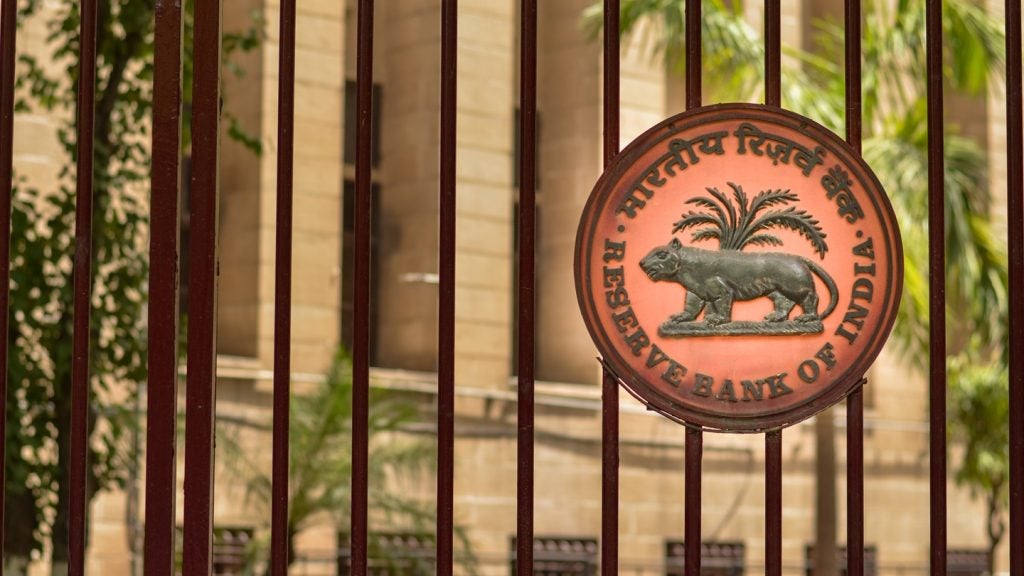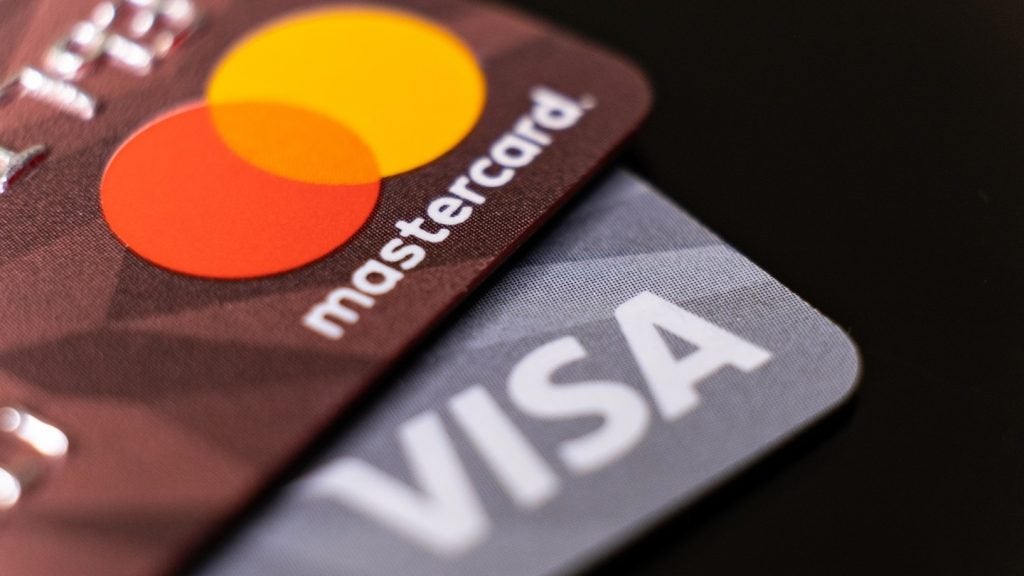One consequence of slowing consumer
spending is that while credit card usage has fallen, debit usage
has enjoyed an upsurge. But so too has cash, for some surprising
reasons. How are payment players positioning themselves in this new
economic environment? Victoria Conroy reports.
 The war on cash is most
The war on cash is most
definitely not over, despite the best efforts of card issuers,
payment networks and industry bodies across the world to encourage
consumers to switch to card payments instead. Indeed, CI’s
analysis of Visa Europe’s 2008 results (see Cash makes a big comeback) reveals that
cash usage has surged markedly over the last few months.

Access deeper industry intelligence
Experience unmatched clarity with a single platform that combines unique data, AI, and human expertise.
Initiatives aimed at migrating low-value
purchases away from notes and coins and onto cards – such as
contactless, micropayments, and mobile payments – are growing
gradually but are yet to make any significant headway into the huge
levels of cash usage. According to the European Payments Council,
cash remains the most widely used payment instrument and represents
8 out of 10 transactions in the eurozone.
Debit’s role in cash
usage
In an economic climate where anxious
consumers are cutting back on credit card usage, it was anticipated
that debit cards would enjoy increasing volumes (if at a slower
rate than before), and this has been evidenced by figures from the
payment networks and industry bodies worldwide. But one consequence
of the rise in debit card usage is that levels of cash usage and
ATM withdrawals have grown sharply over recent months – which will
undoubtedly be viewed as a setback for banks and payment
networks.
CI’s analysis of Visa Europe’s
results shows cash enjoyed a massive surge in popularity with
consumers across Europe towards the end of 2008, when the economic
downturn really began to bite.

US Tariffs are shifting - will you react or anticipate?
Don’t let policy changes catch you off guard. Stay proactive with real-time data and expert analysis.
By GlobalDataIt is no surprise that in a tough economic
climate, consumers become more wary about running up balances on
credit cards or going overdrawn on their current accounts when
using their debit cards. But the current economic turbulence has
also thrown up some surprising indicators about consumer behaviour
in recent months.
CI spoke with Francesco Burelli,
a payment card industry analyst, to get his insight into why cash
is enjoying a new-found popularity.
“During the last few months in the last
quarter 2008, a number of banks across Europe have experienced a
surge in cash withdrawals,” Burelli said. “This is not just ATM
withdrawals – cash withdrawals at bank branch counters have
increased noticeably.”
This view has also been stated by Graham
McKay, director of ATM industry body ATMIA in Europe and the Middle
East.
He told CI: “I was not surprised
to see an increase in cash withdrawals, as ATMIA Europe has contact
with the industry leaders and organisations, and provides
communication and feedback on all relevant technical, political and
regulatory issues.
“Back in October last year at a meeting
with the European Central Bank, they were already seeing a
significant demand for cash, similar to the peaks seen around the
Christmas holidays – but this was occurring in October, which was
around the time when the economic downturn really began to hit.
Already, what we have seen on previous occasions is people turning
to cash during economic downturns, and to a large extent, that has
continued.”
Consumer fears over bank
safety
Burelli says that there could be several factors driving consumers
towards cash.
“Overall we do not know yet what is
driving the growth of cash withdrawals and further research is in
progress to understand the phenomena,” he said. “On one side, given
the economic climate, consumers are now more than ever sensitive to
the theme of feeling in control of their spending. Plastic is
perceived as convenient but not easy to control.”
Previous economic downturns have also seen
a surge in cash usage, but this time around, the reasons are very
different. Europe’s banking industry has been in turmoil lately as
a spate of well-known names – Royal Bank of Scotland, HBOS and
Northern Rock – have been taken over or required bail-outs by
governments to stop them going out of business. The fall of
Northern Rock prompted the UK’s first ‘bank run’ in decades, with
long queues of customers waiting to remove all of their
savings.
Worries about the safety of other banks
across Europe in recent months has prompted another wave of anxious
consumers to head to their bank, worried their bank might go bust,
and this may also explain the recent surge in cash withdrawals in
recent months.
Burelli explains: “People might have been
scared of bank failures and are taking cash out in order to limit
the risk to their savings either by holding liquidity or by
spreading deposits across a number of institutions. If that is the
case, a surge in withdrawals would be a one-off occurrence, where
people withdraw sums in the tens of thousands range up to whatever
the limit is that is guaranteed in various countries.”
McKay adds that in these turbulent
economic times, consumers are now being driven by what he calls the
‘fear factor’.
“There is almost a psychological move on
the part of consumers to go to the safe haven of cash in exactly
the same way as many stock market punters will go to the safe haven
of gold,” he told CI.
“There is that psychological mentality to
move away from using certain card systems.
“If you look at what’s happened at the
banks, largely the giving of credit has been part of the problem.
Therefore what the banks have been doing is freezing some of those
credit lines to reduce their exposure. The moment that occurs then
people start paying with cash, particularly those that tend to live
near to the edge of their credit card limits. Those consumers are
suddenly finding they can’t expand their credit and have to rely on
cash.”
However, the continued slowdown in credit
card spending is also prompting more consumers across Europe to
turn to debit cards as their main payment and transactional tool. A
look at Visa Europe’s results also shows debit volumes at the POS
are still growing, although the rate of growth has slowed over the
past year.
“If it is just people taking out cash to
use as payment because they don’t trust plastic, we are going to
keep seeing a less pronounced increase in debit at the POS, and
more debit usage at ATMs and cash withdrawals at bank counters,”
Burelli explained.
“This hypothesis might be difficult to
prove especially in countries where plastic is growing due to
substitution of other products [for example cash] and within the
overall consumer spending dynamics. This is particularly the case
of continental Europe, where there is still a marked substitution
effect, especially with cheques.”
Cost and revenue
implications
 For card issuers (and by extension the payment networks), a
For card issuers (and by extension the payment networks), a
rise in cash withdrawals is bad news in some respects. Although the
automation of cash distribution through ATM channels has helped to
migrate cash transactions away from the more costly bank branch
counter channel, banks receive much lower interchange income on
debit cards as it is, but a rise in cash withdrawals pushes up both
fixed and variable costs for banks in a number of areas, such as
ATM maintenance, branch and employee operations, and the cost of
‘off-us’ ATM transactions, bilateral bank interchange fees, where
cardholders use their debit cards at a rival bank’s ATM.
Furthermore, a 2007 study from the Central
Bank of Sweden on the cost of payments for Swedish banks in 2002
found that unit costs of cash payments are larger than unit costs
of card payments, but there are difference between different types
of card payments – there is a small difference in unit social costs
between cash and credit card transactions but those of debit cards
are substantially smaller.
The Swedish study showed that, on average,
the variable cost of an ATM cash withdrawal to the issuing bank is
around SKR1.3 ($0.16), compared to SKR0.23 for a debit card
payment, and that debit and credit cards are socially less costly
than cash for payments above €8 ($10.5) and €18 respectively.
The study also found that the provision of
cash comes with cross-subsidies – it estimated that average large
retail bank’s payment service profits are around SKR155 million,
and that all payment services offered by the bank generate a profit
– with the exception of cash.
The central banks of the Netherlands and
Belgium have also conducted their own studies into the differing
costs of payment instruments, with both concluding that cash is
cheaper for low-value transactions. However, for electronic
payments, costs are typically fixed with low marginal costs per
transaction, whereas for cash costs are mixed and the cost of a
transaction increases with the value of the purchase.
Arguments have been made by various
industry players that with cash being subsidised by the usage of
other payment instruments, banks would be justified in implementing
cost-based pricing, which would also have the effect of encouraging
consumers to migrate to payment instruments that are less costly
for banks to provide. Fees for ATM withdrawals have long been
touted as one cost-based pricing measure, and indeed such fees are
commonplace in many markets.
Tellingly, in countries where banks do not
charge fees for ATM withdrawals, cash usage is greater which
negatively impacts card payment usage.
But ATM withdrawal fees are a bone of
contention for consumers in some parts of the world, and this is an
issue which is currently attracting a lot of attention in Australia
(see Australian ATM reform in
place for major shake-up of the market). And in the UK,
regulatory intervention obliged banks there to provide free ATM
transactions as part of customers’ current accounts.
McKay said: “The secondary impact of some
of this could well be with some of the independent ATM deployer
organisations that charge for ATM withdrawals. They may start to
see an adverse effect as people become more cost conscious, and
seek free ATMs.
“I am not convinced ATM withdrawals cost
more for banks to process than other forms of card payments,” McKay
added. “If you look from an IT perspective, dealing electronically
with money is certainly the cheapest way.
“However, if you take the whole cost of
electronic cash including all the fraud, including the software
banks have to buy to try to counter fraud, including all the
investigations into fraud, the loss of seigniorage and so on, and
then you start comparing it with cash, then you have a very
different balance of cost efficiency.
“From a bank perspective, in many ways the
increased use of cash is good news because the ATM has been the
most cost-effective way of distributing cash,” McKay added. “The
more transactions that go through that channel, the more
cost-effective the ATM becomes.
“The secondary impact of increased
circulation of cash is what HSBC have done, and one or two of the
other more progressive banks, which is to introduce auto-deposit
cash recycling, where the higher level of cash in circulation means
the retailers can, on a daily basis deposit cash, which is
authenticated, sorted, and then credited to the retailers
account.
“The cycle of using cash for the retailer
becomes much more cost-effective, as does the cycle for the banks
getting cash in at a time when there’s some extensive pressure on
them.”
New weapons in the war on
cash
 Initiatives such as prepaid
Initiatives such as prepaid
cards and contactless payment have been pushed by the payment
networks as weapons in the war on cash, and although uptake of both
forms of payment is gradually increasing, they have yet to make a
serious dent into cash usage.
Of prepaid cards, McKay says the issue of
fees (fees for purchasing the card, for loading, POS and ATM usage)
is a contentious one.
“To try to overcome this by starting to
push a prepaid card, you have to look at what a prepaid card is,”
he said.
“It is a piece of plastic that has a
stored value, but then so has that ECB piece of paper with €20
written on it. The difference between having a bank note and a
prepaid card for the same amount is that when you spend a bank note
you know exactly how much you have paid and the change you have
got. With prepaid, you don’t have a clue.
“If someone came up with a mechanism along
the lines of an e-purse that is purely to replace the coins in your
pocket, that’s a different scenario – suddenly from the public
perspective, there is a way to eliminate the need to carry loose
change around.
“But that will not have the profit level
to cover any return on investment because the transaction profit is
going to be too low, and possibly a loss.
“What would the public like, what would
the cost be and what would the profit be? As far as Visa and
MasterCard are concerned, they are trying to find other ways of
generating transaction volume.”
McKay is also skeptical about the
potential for contactless payment to do away with the need for
cash.
“Contactless is very good in a closed-loop
environment such as a metro system, where you have got hundreds of
people trying to get through a gate quickly. Contactless in that
situation makes a lot of sense,” he said.
“The UK retailer Boots analysed the speed
of transactions with different payment methods and certainly the
fastest was contactless at around six seconds, cash was next at
around 10 seconds, and a card was about 20 seconds.
“When you start looking at footfall in a
store like [high-street chemist] Boots, in some inner city stores
they sell sandwiches and snacks, and the objective is to get the
people into the store so they will browse and buy something
else.”
However, McKay says, larger retailers are
not necessarily looking to get people out of their stores in the
least amount of time, and this may explain why some of the biggest
retailers like Tesco, Sainsbury’s and others have so far refused to
jump on the contactless bandwagon.
“They are not interested in gaining four
seconds between contactless and cash transactions, they are
interested in getting you in the store and therefore the
four-second saving doesn’t make a lot of difference,” he said.
“What it does do is impact the cost to the
infrastructure of adding a new payments system, of training their
staff, and the cost of the transaction itself on an item which is
fast food. If people only buy snacks, the retailer is not really
making any profit. It is only those areas of retail where you get
fast footfall running through that contactless makes sense.
“For contactless to take off, there has
got to be a different business case. The only time the big
retailers prefer card payments is when you are in a shop and you
see an item that would be an impulse buy that you can purchase with
a card because you haven’t got enough cash… whereas contactless
is really for loose change-value purchases.”
SEPA
For continental Europe, the added
complications of SEPA and the Payment Services Directive (PSD) have
confused the future direction of payment instrument provision and
costs and ATM charging, given that European regulators and
competition authorities are committed to making financial services
fees for consumers more transparent and are also committed to
opening up greater competition within the European payments
area.
SEPA may usher in a new era of
liberalisation in European payments, but the cost and revenue
implications are less obvious for payment service providers.
A 2007 study by global business
consultancy McKinsey found that European banks lose money on
non-SEPA payment instruments such as cash and cheques, whereas they
make some profit on SEPA instruments such as card payments, credit
transfers and direct debits (although SEPA direct debits are also a
bone of contention at the moment).
And the PSD’s ramifications include the
growing threat of non-bank players being added into the mix,
putting further downward pressure on bank revenues.
But there could be light at the end of
tunnel for banks willing to embrace cash, according to McKay.
“As an example, HSBC have around 400
auto-deposit cash recycling machines installed, and they’re getting
around £100 million [$140 million] per month deposited,” McKay
said.
“That is cash at a time when cash is in
short supply, and that’s authenticated cash because it goes through
all the authentication processes.
“The money doesn’t need to go to a cash
recycling centre and can be put straight into ATMs or distributed
to other branches which are cash-negative.
“I can see that one of the biggest impacts
is that those banks which are progressive will see the advantage of
introducing auto-deposit functionality and more local cash
recycling, rather than transporting to major cash centres.”
Another industry sector that may see an
upside from the surge in cash usage is the ATM suppliers.
“I can see the likes of ATM manufacturers
as doing reasonably well during this period because of the demand
for cash and the demand for ATMs, service and reliability, and the
potential of ATMs for cash recycling functionality or auto-deposit
functionality,” McKay added.
“It is an interesting scenario that is
beginning to build up, and one which will be discussed along with
other industry issues at the European ATM conference in London on
11 and 12 May, jointly organised by ATMIA and RBR.”







